Calculus: One and Several Variables
Original price was: ₹24,854.54.₹19,883.63Current price is: ₹19,883.63.
ISBN: 9780471698043
Author/Editor: Saturnino L. Salas
Publisher: John Wiley
Year: 2007
1 in stock (can be backordered)
Description
Never HIGHLIGHT a Book Again! Includes all testable terms, concepts, persons, places, and events. Cram101 Just the FACTS101 studyguides gives all of the outlines, highlights, and quizzes for your textbook with optional online comprehensive practice tests. Only Cram101 is Textbook Specific. Accompanies: 9780471698043. This item is printed on demand.
Additional information
| Weight | 2.348 kg |
|---|
Product Properties
| Year of Publication | 2007 |
|---|---|
| Table of Contents | Chapter 1. Precalculus Review. 1.1 What is Calculus? 1.2 Review of Elementary Mathematics. 1.3 Review of Inequalities. 1.4 Coordinate Plane; Analytic Geometry. 1.5 Functions. 1.6 The Elementary Functions. 1.7 Combinations of Functions. 1.8 A Note on Mathematical Proof; Mathematical Induction. Chapter 2. Limits and Continuity. 2.1 The Limit Process (An Intuitive Introduction). 2.2 Definition of Limit. 2.3 Some Limit Theorems. 2.4 Continuity. 2.5 The Pinching Theorem; Trigonometric Limits. 2.6 Two Basic Theorems. Chapter 3. The Derivative; The Process of Differentiation. 3.1 The Derivative. 3.2 Some Differentiation Formulas. 3.3 The d/dx Notation; Derivatives of Higher Order. 3.4 The Derivative as a Rate of Change. 3.5 The Chain Rule. 3.6 Differentiating the Trigonometric Functions. 3.7 Implicit Differentiation; Rational Powers. Chapter 4. The Mean-Value Theorem; Applications of the First and Second Derivatives. 4.1 The Mean-Value Theorem. 4.2 Increasing and Decreasing Functions. 4.3 Local Extreme Values. 4.4 Endpoint Extreme Values; Absolute Extreme Values. 4.5 Some Max-Min Problems. 4.6 Concavity and Points of Inflection. 4.7 Vertical and Horizontal Asymptotes; Vertical Tangents and Cusps. 4.8 Some Curve Sketching. 4.9 Velocity and Acceleration; Speed. 4.10 Related Rates of Change Per Unit Time. 4.11 Differentials. 4.12 Newton-Raphson Approximations. Chapter 5. Integration. 5.1 An Area Problem; A Speed-Distance Problem. 5.2 The Definite Integral of a Continuous Function. 5.3 The Function f(x) = Integral from a to x of f(t) dt. 5.4 The Fundamental Theorem of Integral Calculus. 5.5 Some Area Problems. 5.6 Indefinite Integrals. 5.7 Working Back from the Chain Rule; the u-Substitution. 5.8 Additional Properties of the Definite Integral. 5.9 Mean-Value Theorems for Integrals; Average Value of a Function. Chapter 6. Some Applications of the Integral. 6.1 More on Area. 6.2 Volume by Parallel Cross-Sections; Discs and Washers. 6.3 Volume by the Shell Method. 6.4 The Centroid of a Region; Pappus's Theorem on Volumes. 6.5 The Notion of Work. 6.6 Fluid Force. Chapter 7. The Transcendental Functions. 7.1 One-to-One Functions; Inverse Functions. 7.2 The Logarithm Function, Part I. 7.3 The Logarithm Function, Part II. 7.4 The Exponential Function. 7.5 Arbitrary Powers; Other Bases. 7.6 Exponential Growth and Decay. 7.7 The Inverse Trigonometric Functions. 7.8 The Hyperbolic Sine and Cosine. 7.9 The Other Hyperbolic Functions. Chapter 8. Techniques of Integration. 8.1 Integral Tables and Review. 8.2 Integration by Parts. 8.3 Powers and Products of Trigonometric Functions. 8.4 Integrals Featuring Square Root of (a^2 - x^2), Square Root of (a^2 + x^2), and Square Root of (x^2 - a^2). 8.5 Rational Functions; Partial Functions. 8.6 Some Rationalizing Substitutions. 8.7 Numerical Integration. Chapter 9. Differential Equations. 9.1 First-Order Linear Equations. 9.2 Integral Curves; Separable Equations. 9.3 The Equation y" + ay'+ by = 0. Chapter 10. The Conic Sections; Polar Coordinates; Parametric Equations. 10.1 Geometry of Parabola, Ellipse, Hyperbola. 10.2 Polar Coordinates. 10.3 Graphing in Polar Coordinates. 10.4 Area in Polar Coordinates. 10.5 Curves Given Parametrically. 10.6 Tangents to Curves Given Parametrically. 10.7 Arc Length and Speed. 10.8 The Area of a Surface of Revolution; Pappus's Theorem on Surface Area. Chapter 11. Sequences; Indeterminate Forms; Improper Integrals. 11.1 The Least Upper Bound Axiom. 11.2 Sequences of Real Numbers. 11.3 The Limit of a Sequence. 11.4 Some Important Limits. 11.5 The Indeterminate Forms (0/0). 11.6 The Indeterminate Form ( / ); Other Indeterminate Forms. 11.7 Improper Integrals. Chapter 12. Infinite Series. 12.1 Sigma Notation. 12.2 Infinite Series. 12.3 The Integral Test; Basic Comparison, Limit Comparison. 12.4 The Root Test; The Ratio Test. 12.5 Absolute and Conditional Convergence; Alternating Series. 12.6 Taylor Polynomials in x; Taylor Series in x. 12.7 Taylor Polynomials and Taylor Series in x - a. 12.8 Power Series. 12.9 Differentiation and Integration of Power Series. Chapter 13. Vectors. 13.1 Rectangular Space Coordinates. 13.2 Vectors in Three-Dimensional Space. 13.3 The Dot Product. 13.4 The Cross Product. 13.5 Lines. 13.6 Planes. 13.7 Higher Dimensions. Chapter 14. Vector Calculus. 14.1 Limit, Continuity, Vector Derivative. 14.2 The Rules of Differentiation. 14.3 Curves. 14.4 Arc Length. 14.5 Curvilinear Motion; Curvature. 14.6 Vector Calculus in Mechanics. 14.7 Planetary Motion. Chapter 15. Functions of Several Variables. 15.1 Elementary Examples. 15.2 A Brief Catalogue of Quadric Surfaces; Projections. 15.3 Graphs; Level Curves and Level Surfaces. 15.4 Partial Derivatives. 15.5 Open Sets and Closed Sets. 15.6 Limits and Continuity; Equality of Mixed Partials. Chapter 16. Gradients; Extreme Values; Differentials. 16.1 Differentiability and Gradient. 16.2 Gradients and Directional Derivatives. 16.3 The Mean-Value Theorem; the Chain Rule. 16.4 The Gradient as a Normal; Tangent Lines and Tangent Planes. 16.5 Local Extreme Values. 16.6 Absolute Extreme Values. 16.7 Maxima and Minima with Side Conditions. 16.8 Differentials. 16.9 Reconstructing a Function from Its Gradient. Chapter 17. Multiple Integrals. 17.1 Multiple-Sigma Notation. 17.2 Double Integrals. 17.3 The Evaluation of Double Integrals by Repeated Integrals. 17.4 The Double Integral as the Limit or Riemann Sums; Polar Coordinates. 17.5 Further Applications of Double Integration. 17.6 Triple Integrals. 17.7 Reduction to Repeated Integrals. 17.8 Cylindrical Coordinates. 17.9 The Triple Integral as the Limit of Riemann Sums; Spherical Coordinates. 17.10 Jacobians; Changing Variables in Multiple Integration. Chapter 18. Line Integrals and Surface Integrals. 18.1 Line Integrals. 18.2 The Fundamental Theorem for Line Integrals. 18.3 Work-Energy Formula; Conservation of Mechanical Energy. 18.4 Another Notation for Line Integrals; Line Integrals with Respect to Arc Length. 18.5 Green's Theorem. 18.6 Parametrized Surfaces; Surface Area. 18.7 Surface Integrals. 18.8 The Vector Differential Operator N. 18.9 The Divergence Theorem. 18.10 Stokes's Theorem. Chapter 19. Additional Differential Equations. 19.1 Bernoulli Equations; Homogeneous Equations. 19.2 Exact Differential Equations; Integrating Factors. 19.3 Numerical Methods. 19.4 The Equation y" + ay'+ by = o(x). 19.5 Mechanical Vibrations. Appendix A. Some Additional Topics. A.1 Rotation of Axes; Eliminating the xy-Term. A.2 Determinants. Appendix B. Some Additional Proofs. B.1 The Intermediate-Value Theorem. B.2 Boundedness; Extreme-Value Theorem. B.3 Inverses. B.4 The Integrability of Continuous Functions. B.5 The Integral as the Limit of Riemann Sums. |
| Author | Saturnino L. Salas |
| ISBN/ISSN | 9780471698043 |
| Binding | Hardback |
| Edition | 10 |
| Publisher | John Wiley |
You must be logged in to post a review.

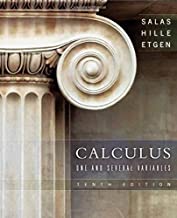
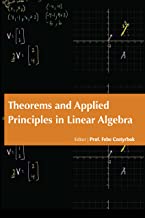
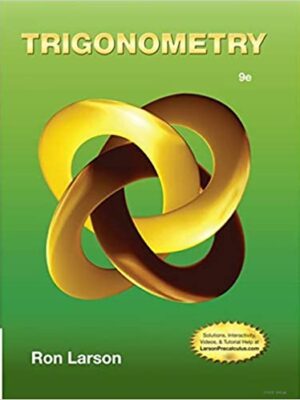
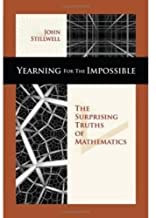
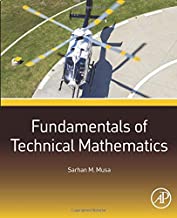
Reviews
There are no reviews yet.